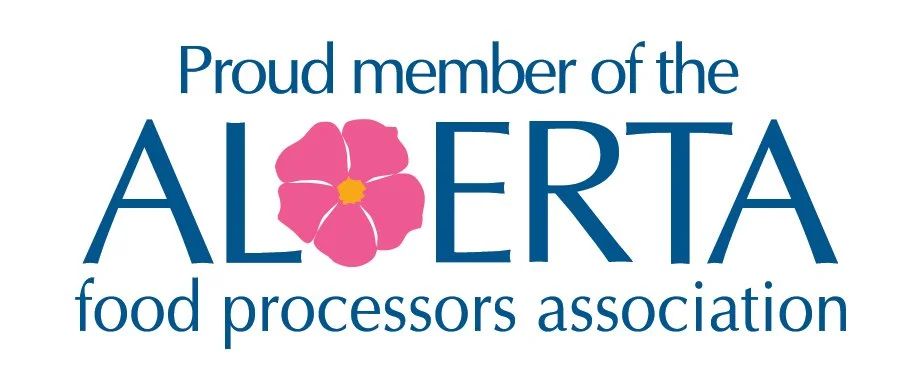This article outlines the two top ways your food manufacturing company can become more sustainable: reducing food waste and modifying packaging. Sustainability is here to stay, and if you want to grow your market share you should consider these tips.
Note: This article looks at food manufacturing specific examples of how to become more sustainable. For more general sustainable manufacturing practices check out our other blog: Sustainable Manufacturing – The Benefits Are More Than Being Green
1. Reduction of Food Waste
A great way to become more sustainable as a company is to reduce food waste, and not just reducing food waste in your manufacturing practices, but also reducing the potential for food waste after it gets into your customer hands. According to Agriculture and Agri-Food Canada, more than half of Canada’s food supply is wasted annually, which works out to around $49.5 billion in wasted food. Food waste happens anywhere throughout the supply chain from the farm to the table. Supply chain alone was responsible for an estimated 12 per cent of Canada’s food waste in 2019.
““With nearly one third of all food produced lost or wasted, tackling food waste is critical to build a more sustainable future.” ”
Below are some tips on how your company can help reduce Canada’s food waste:
A. Improve labels and Instructions
Improving labels and instructions can help your customers have a better understanding of how best to keep your product so that it does not become waste. A simple change can include making the best before date clearer. Another change can be including instructions on how to cook, freeze, thaw and store the products.
B. Improve Forecasting
If you notice that you often have food waste at your facility, maybe it is time to invest in newer technology and start implementing Industry 4.0. This can help you gain better and a more detailed incite on your forecasting and result in a lower chance of having to waste food due to excess raw materials. Not only can better forecasting help you reduce food waste, but it can also help you save money and increase profitability.
C. Change Portion Sizes
As seen in the chart below, the average number of people per household has been decreasing over the years. This means that larger portion sizes are not often being fully used before the food goes bad, leading to more food waste. By reducing or creating two different portion sizes, consumers can buy the size that is best for their respective household size and therefore help reduce food waste.
Number of Households and Average Number of People Per Household, Canada, 1851-2011
Sourced from Statistics Canada
2. Changing Up Packaging
As mentioned briefly above changing your packaging can help reduce food waste, but it can also help your company become more sustainable. Sustainable packaging can be many things including changing current packaging to recycled or raw material. Another way to change packaging is to reduce the amount of single use plastic and reduce the overall amount of packaging.
Packaging has always been used to make one’s product more appealing than another, and to help stand out to the consumers. Changing one’s packing to more sustainable packaging is another way to make the item standout. 94 per cent of Canadians are motivated to reduce their single-use plastics according to The Agri-Food Analytics Lab at Dalhousie University. The below chart shows Canadians most favoured alternative to plastic packaging.
Preferred Types of Environmentally Friendly Food Packaging in Canada as of May 2019
Sourced from Statista
Vancouver based, Good Natured Products Inc. through its subsidiaries, designs, produces, and distributes bioplastics for use in packaging and durable product applications in Canada and the United States. It offers packaging products for baked goods, deli and prepared meals, and fruits and veggies as well as compostable take-out containers, such as hot cups and lids, plates, carry out boxes, cutlery, and soup bowls and lids. The company was formerly known as Solegear Bioplastic Technologies Inc. and changed to its current name in 2017.
Examples of Food Manufacturing Companies Switching to Sustainable Packaging:
NIKU Farms is a Canadian farm-to-door meat subscription box company. It announced it would start using Green Cell Foam, a natural, environmentally friendly packaging material that is biodegradable and requires 70 per cent less energy and 80 per cent fewer GhG to produce than petroleum-based foams.
Maple Leaf Foods has a vision to be the most sustainable protein company on Earth. To work towards this goal, it uses 100% recyclable trays for all of their raw meats and 100% recyclable packaging for boxes used for frozen goods. Maple Leaf Foods also used 100% post consumer recycled plastic water bottles to make clear protein trays.
Carlsberg is working on a biodegradable ‘paper’ beer bottle made from sustainably sourced wood fibers. Although this ‘paper’ beer bottle is still in the testing stages, Carlsberg also has a Snap Pack for beer cans which uses 76 per cent last plastic than normal six pack rings.
Conclusion
We believe that both reducing food waste and improving packaging are key for food manufacturing companies moving forward if they want to stay competitive in the marketplace. Sustainability has become a large deciding factor for which products people are purchasing. Although this article only investigates two different food manufacturing sustainable practices, we highly recommend our Sustainable Manufacturing – The Benefits Are More Than Being Green blog. This blog highlights more benefits of becoming a sustainable manufacturer and other ways to become more sustainable.


















